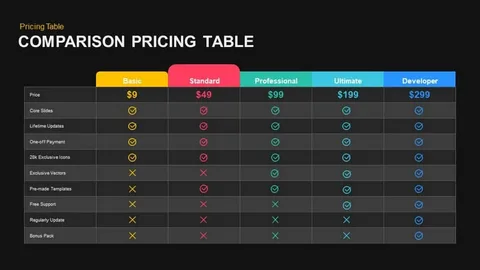In the realm of productivity and project management, selecting the right tool can make all the difference in how efficiently teams operate. With so many options on the market, each offering various features designed to streamline workflows, it can be challenging to determine which tool best suits an organization’s needs. One of the rising contenders in this space is Mylt34, a versatile platform aimed at simplifying complex project management tasks while maintaining flexibility and ease of use. But how does Mylt34 compare to other tools that have been established in the market? In this post, we’ll explore how Mylt34 stacks up against other popular project management and productivity tools by evaluating factors like features, usability, integrations, customization, and pricing.
What is Mylt34?

Before diving into a detailed comparison, it’s important to understand what Mylt34 is and what it brings to the table. Mylt34 is a project management tool designed to support individuals, teams, and organizations in managing their projects from start to finish. It provides a comprehensive set of features for planning, tracking progress, and collaborating in real time. With its intuitive interface, Mylt34 is intended to be used by people of varying technical abilities, from novice project managers to seasoned professionals.
The core philosophy behind Mylt34 is to help users “manage less and accomplish more” by offering a balance of robust features and simplicity, reducing the learning curve typically associated with complex project management tools. With that, let’s break down how Mylt34 compares to other major tools in the industry, such as Trello, Asana, Monday.com, and Jira.
Feature Comparison

1. Task Management
At its core, any project management tool must excel at handling tasks. The ability to create, assign, and track tasks effectively is essential for team collaboration. Let’s look at how Mylt34 handles task management in comparison to other tools:
- Mylt34: Mylt34 offers a drag-and-drop interface that allows users to create tasks, assign them to team members, and set deadlines with ease. Tasks can be categorized into different lists or boards, giving users the flexibility to arrange their work in a way that best fits their project structure. Its standout feature here is real-time updates on task progress, which ensures that every team member is aligned without the need for constant check-ins.
- Trello: Trello uses a card-based system where tasks are displayed as cards on different boards. This Kanban-style approach is ideal for visualizing workflows, but it may become cumbersome when managing larger projects due to limited hierarchy options.
- Asana: Asana offers a more structured task management system compared to Trello. Users can break down tasks into subtasks, assign priority levels, and set due dates. While this gives Asana an edge in managing more complex projects, the learning curve is higher for new users.
- Monday.com: Monday.com provides a highly customizable task management interface with multiple views, such as Kanban, Gantt charts, and timelines. While this flexibility is an advantage, it can overwhelm users looking for a more straightforward solution.
- Jira: Known for its use in software development teams, Jira excels at task management for agile and scrum-based projects. However, its complexity makes it less suitable for non-technical teams or simpler projects.
Comparison Verdict: For users who prioritize simplicity and real-time collaboration without sacrificing functionality, Mylt34 offers a middle ground between tools like Trello (simple but limited) and Monday.com (flexible but complex). It is particularly well-suited for medium-sized projects that require tracking without overwhelming users.
2. Project Visualization
Different teams have different needs when it comes to how they visualize project progress. Some prefer a linear timeline, while others benefit from a Kanban board or Gantt chart.
- Mylt34: One of the unique features of Mylt34 is its ability to toggle between different project views. You can switch from a Kanban board to a Gantt chart or timeline with ease, giving teams flexibility in how they track progress. Its smart dashboard consolidates data, offering quick insights into the overall status of a project.
- Trello: Trello is primarily known for its Kanban board layout. While it does offer simplicity in visualizing tasks, it lacks built-in support for timelines or Gantt charts unless integrated with third-party tools.
- Asana: Asana offers multiple ways to view projects, including lists, boards, and timelines (Gantt charts). This variety makes it versatile, but the timeline feature is only available in premium plans, making it less accessible for smaller teams on a budget.
- Monday.com: Monday.com shines when it comes to visualization options, offering different views like Kanban, timeline, calendar, and Gantt charts. Its interface is highly customizable, allowing users to tailor it to their specific project needs.
- Jira: Jira offers extensive visualization options, particularly suited for software development teams working in sprints. It offers agile boards, burndown charts, and customizable dashboards but is less intuitive for general users outside of software development.
Comparison Verdict: Mylt34 provides strong visual management tools with flexible views, giving it an advantage over Trello in terms of functionality and ease of use, and placing it on par with Asana and Monday.com for teams requiring dynamic visualization options.
3. Collaboration and Communication
Seamless collaboration is a key feature in any modern project management tool. The ability to communicate directly within tasks or projects reduces the need for excessive email threads and meetings.
- Mylt34: Mylt34 integrates real-time messaging within the platform, allowing users to communicate directly on tasks and projects. Additionally, file sharing and document collaboration can occur without needing external tools. Notifications keep team members updated on changes in real time.
- Trello: Trello allows users to comment on cards, but real-time communication is limited unless you integrate it with other tools like Slack.
- Asana: Asana’s commenting system is robust, with the ability to assign comments as actionable items. However, like Trello, it lacks a dedicated real-time messaging feature.
- Monday.com: Monday.com includes a comments section for tasks, but like Asana and Trello, it relies on integrations for real-time chat.
- Jira: Jira has similar features for collaboration through comments, but teams often supplement it with external communication tools like Slack or Microsoft Teams.
Comparison Verdict: Mylt34’s real-time messaging and native collaboration tools provide a more integrated experience compared to Asana, Trello, and Monday.com, reducing the need for third-party communication apps.
4. Integrations
Most teams rely on a suite of tools to get their work done, making integrations a critical feature of any project management system.
- Mylt34: Mylt34 supports a wide range of integrations, including popular tools like Google Workspace, Slack, Microsoft Teams, and Dropbox. This makes it easy to connect your existing workflows to the platform without major disruptions.
- Trello: Trello boasts a rich library of “power-ups” or integrations, but many of its advanced features require paid plans.
- Asana: Asana has strong integration capabilities, particularly with tools like Google Drive, Slack, and Microsoft Office. However, some advanced integrations are locked behind higher-tier plans.
- Monday.com: Monday.com offers extensive integration options with various third-party apps like Zoom, Slack, and Salesforce, but configuring these integrations can be complex.
- Jira: Jira integrates well with development tools like GitHub and Bitbucket, making it ideal for software development teams. However, general business integrations are less intuitive.
Comparison Verdict: Mylt34 offers solid integration options that are easier to implement than some of its competitors, particularly for non-technical users.
Pricing
One of the most significant factors influencing tool choice is pricing. Mylt34 offers a competitive pricing model, with a free tier for small teams and affordable paid plans that unlock advanced features. In comparison:
- Trello: Trello’s free version is adequate for basic project management but lacks advanced features without a paid plan.
- Asana: Asana offers a free tier, but its premium plans are expensive for teams looking to use advanced features like Gantt charts.
- Monday.com: Monday.com’s pricing is on the higher side, especially when adding additional users or unlocking advanced customization options.
- Jira: Jira’s pricing is competitive, but its value is best realized in technical environments, not necessarily in general business use.
Final Verdict: How Does Mylt34 Compare?
In conclusion, Mylt34 holds its own in the competitive project management space by offering a balance of simplicity and functionality. While tools like Trello excel in simplicity and tools like Jira specialize in software development, Mylt34 carves out a space for itself as a highly flexible and collaborative tool that is easy to use yet powerful enough for medium to large projects. Its real-time messaging, smart visualization tools, and robust integrations make it a standout choice for teams looking for a reliable project management solution without the steep learning curve or high costs associated with other platforms.

